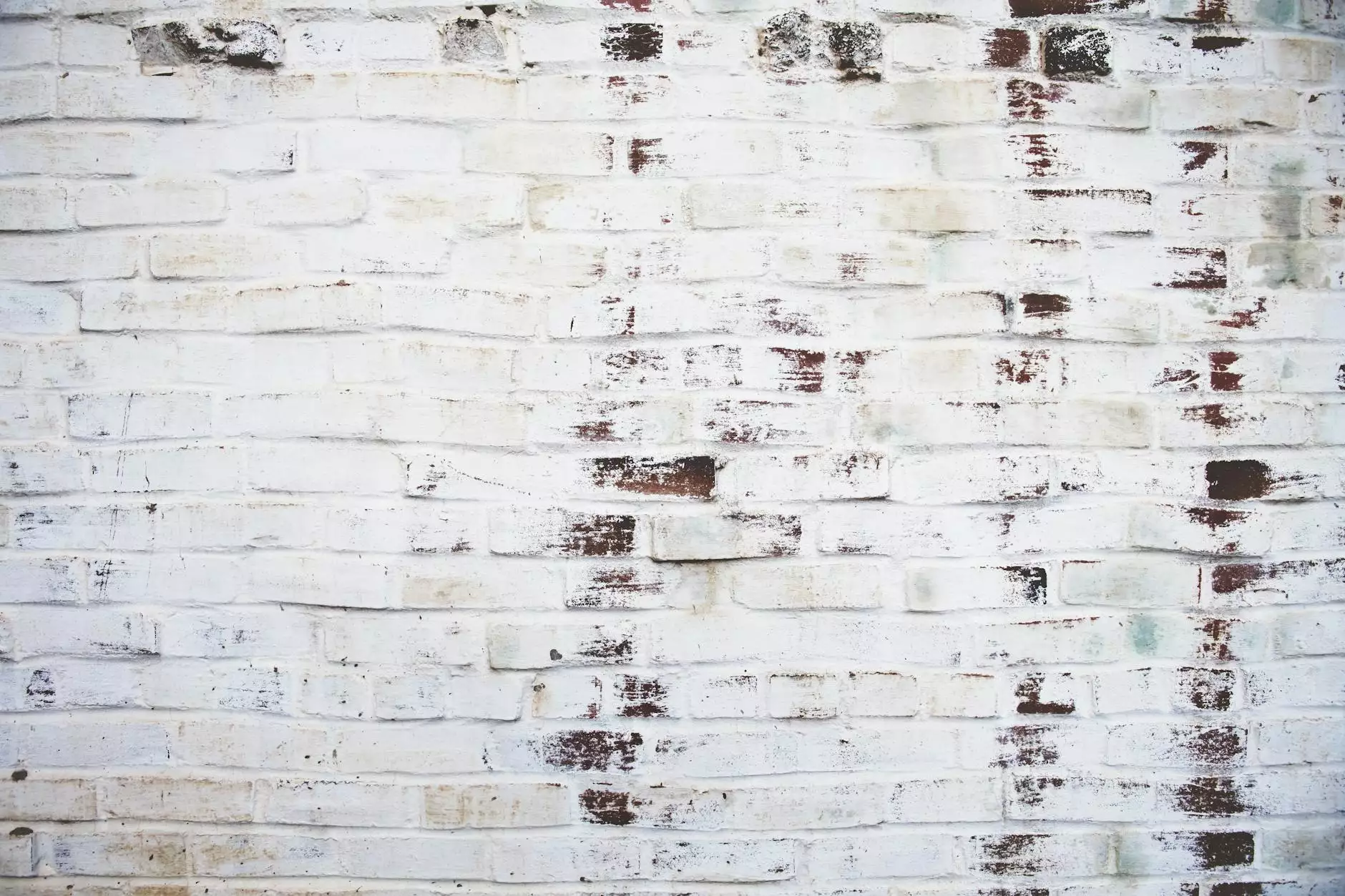Removing Paint from Brickwork: Expert Techniques and Tips

Brickwork is a stunning architectural feature that can greatly enhance the aesthetic appeal of any property. However, over time, paint can accumulate on bricks, creating an unsightly appearance and potentially damaging the underlying material. In this comprehensive guide, we will explore effective methods for removing paint from brickwork, ensuring that your bricks look their best while maintaining their structural integrity.
Understanding the Importance of Brick Cleaning
Before diving into the techniques for removing paint from brickwork, it's essential to understand why regular brick cleaning is crucial. Here are several reasons:
- Restoration of Aesthetic Value: Clean bricks enhance the overall appearance of your home or building.
- Protecting Structural Integrity: Dirt, grime, and paint can cause deterioration over time, leading to costly repairs.
- Preventing Future Damage: Regular maintenance helps prevent paint and other substances from bonding too firmly with the bricks.
Common Challenges in Removing Paint from Brickwork
Removing paint from brickwork can be tricky for several reasons:
- Porosity of Brick: Bricks are porous, meaning they can absorb paint and other substances, making removal more complicated.
- Type of Paint: Different types of paint (oil-based, water-based, etc.) require varied removal methods.
- Brick Condition: Damaged or aged bricks may be more susceptible to damage during the paint removal process.
Preliminary Steps Before Removal
Before you start the paint removal process, follow these preliminary steps to ensure the best outcomes:
- Assess the Area: Inspect the brickwork to determine the extent of the paint covering.
- Choose the Right Day: Select a dry day for the removal process to prevent moisture-related damage.
- Gather Your Tools: Ensure you have all necessary tools and materials for the job.
Essential Tools and Materials for Removing Paint from Brickwork
Here is a list of tools and materials you will need:
- Pressure Washer: Ideal for older, tougher paint that requires vigorous cleaning.
- Paint Stripper: Chemical solutions designed to loosen paint from surfaces.
- Scrapers: Use plastic or metal scrapers to gently remove loose or flaking paint.
- Brushes: Stiff-bristled brushes can help in scrubbing the paint off.
- Protective Gear: Always wear gloves, goggles, and a mask when using chemicals or working with high-pressure equipment.
Effective Techniques for Removing Paint from Brickwork
1. Using a Pressure Washer
Pressure washing is one of the most effective methods for removing paint from brickwork, especially when dealing with large areas or multiple layers of paint. Follow these steps:
- Test the Pressure: Always start with a lower pressure setting and gradually increase until you find the best setting that removes paint without damaging the bricks.
- Hold the Nozzle at an Angle: Keep the nozzle at a 45-degree angle to prevent water from penetrating into the bricks.
- Work in Sections: Start from the top and work your way down to avoid streaking.
2. Chemical Paint Strippers
Chemical paint strippers can effectively dissolve paint, making it easier to scrub off. Here’s how to use them:
- Choose the Right Product: Depending on the type of paint, select a suitable solvent or stripper.
- Follow Instructions: Apply according to the manufacturer’s direction for safe and effective application.
- Use a Scraper: After the stripper has settled, use a scraper to gently remove the paint.
3. Manual Scraping
For smaller areas or detailed work, manual scraping can be effective. Here’s a brief guide:
- Select the Right Scraper: Use a scraper that is suitable for the condition of your bricks.
- Be Gentle: Apply mild pressure to avoid damaging the brick surface.
- Clean the Scraper Frequently: Wipe the scraper regularly to prevent paint from building up.
4. Soda Blasting and Sandblasting
If you are facing particularly stubborn paint, consider soda blasting or sandblasting:
- Soda Blasting: This uses baking soda as the abrasive, which is less likely to damage bricks.
- Sandblasting: This method is more aggressive and should be used with caution to avoid damaging the brick surface.
Post-Removal Care for Brickwork
After successfully removing paint from brickwork, it’s crucial to maintain your bricks. Here are steps to consider:
- Allow to Dry: Give the bricks ample time to dry completely before applying any sealants or coatings.
- Inspect for Damage: Check for any cracks or structural issues that may need attention.
- Consider Sealing: After cleaning, sealing the bricks can protect them from future damage.
Conclusion: The Benefits of Professional Brick Cleaning Services
While many homeowners may attempt removing paint from brickwork themselves, enlisting the help of professionals ensures a thorough and effective cleanse without damaging the brick. At London Brick Cleaning Company, we specialize in restoring brickwork to its original beauty without causing harm to the materials. Our team utilizes the latest techniques and equipment to deliver exceptional results. Trust us to bring new life to your brickwork!
Remember: Proper maintenance after paint removal is essential to protect the longevity and appearance of your brick surfaces. Don’t hesitate to contact experts for professional advice and services!









